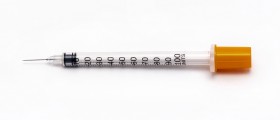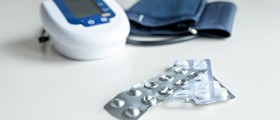
If the family dog is looking or acting a little strange, or if it has lost a lot of weight recently, there is a possibility that it could have a form of dog diabetes. This diabetes, called diabetes mellitus, is often referred to as sugar diabetes, and comes in two types. Type 1 is caused by the insufficient production of insulin, and Type 2 is caused by an inadequate response to the insulin by the dog.
Diabetes in dogs occurs similarly to the way it does in humans. It occurs when the body is not able to break down glucose properly and use it accordingly. This then causes sugar to appear in the urine, which then causes excessive urination. If the dog is maintaining a regular diet and is still losing weight, then it might have diabetes.
The most common symptoms are drinking a lot of water and urinating a lot. Other than the weight lost, there are other physical symptoms that occur on the skin and hair. Vomiting and weakness in the rear legs are other signs of the condition. If a dog has diabetes that is not treated for a longer period of time, it can go blind and develop kidney problems as well.
Even though there is no known cause for dog diabetes, many experts believe that heredity, obesity and medications play a big role. It can affect any breed or sex of dog at any age. The veterinarian will first have to do a physical exam and then run some blood and urine tests to test for diabetes.
If the vet finds out that the dog’s sugar levels are too high, it is often kept there for several days in order to monitor the glucose levels. After that, treatment options will be discussed with the dog owner. Though some choose, unfortunately, to euthanize the dog, there are special diets that can help as well, along with administering insulin shots.
If the owner opts for treatment, the dog will be kept several more days for testing and treatment at the animal hospital and will receive insulin shots. It is important to know that all dogs react differently to insulin and it takes time to find the right kind and the right amount of dosage for the dog, that is why the doctors must keep them at the hospital and monitor them for several days.
A dosage that is too high in insulin could cause a low blood sugar level, which is another potential life threatening consequence of the diabetes. In such a case, the dog should be given kayo syrup or sugar and water orally. It should later continue eating what it usually eats.
Once the right insulin treatment for the dog is found, it is sent back home with special feeding instructions. Often the dogs with diabetes are overweight, so the diet will probably be decreased in order to enable them to lose weight.
The diet will usually be high in fiber and carbohydrates, which is what is usually recommended in most cases of diabetes.

















Your thoughts on this
Loading...